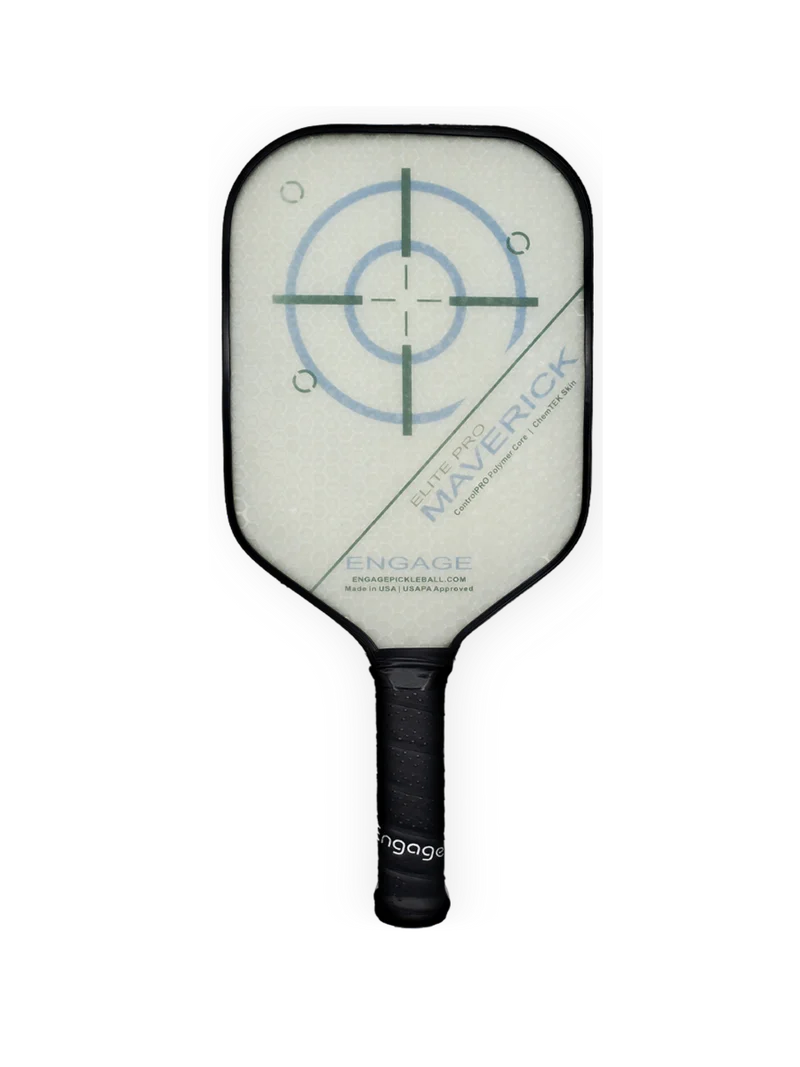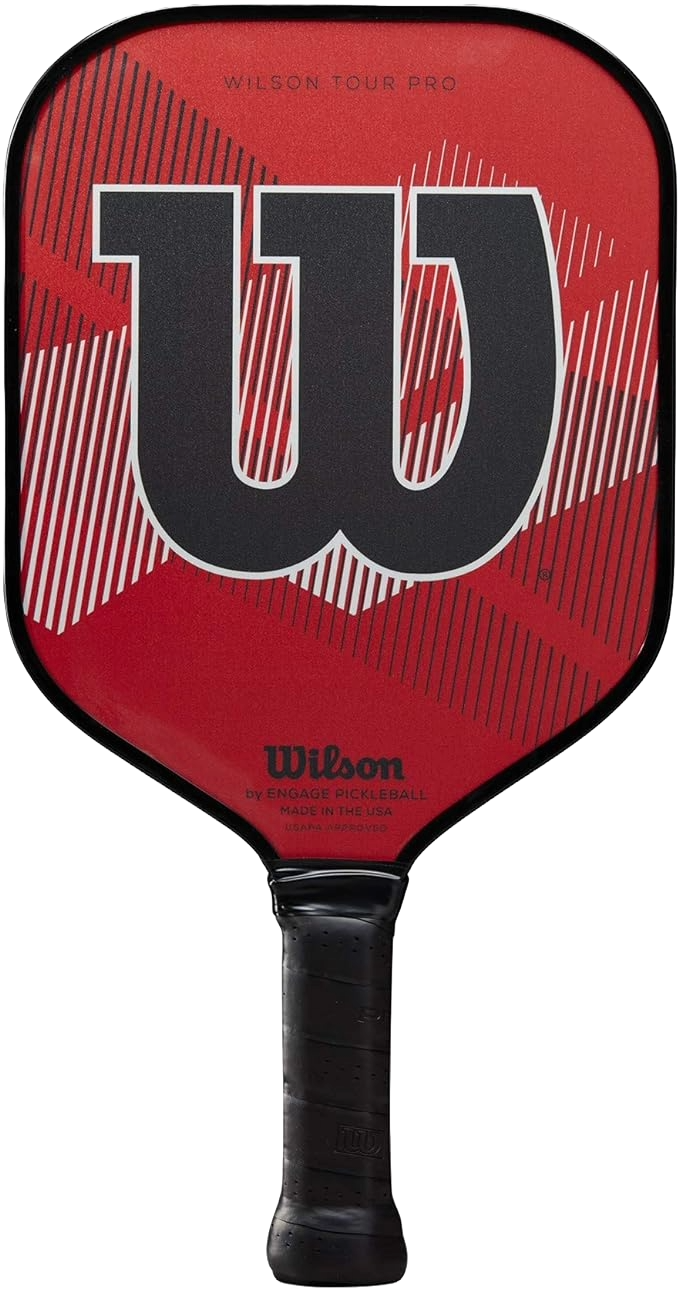Pickleball, a sport that masterfully blends elements from tennis, badminton, and ping pong, is rapidly gaining popularity among athletes of varying ages and skill levels. Particularly appealing to tennis players branching out into this exhilarating game, the choice of a pickleball paddle becomes a pivotal decision. This article aims to guide tennis players through the bustling world of pickleball paddles, spotlighting some of the top choices available in today's market.
Picture yourself transitioning from the familiar grip of your tennis racket to the new realm of pickleball. This transition, much like our illustration, is a journey from the known to the exciting unknown. When selecting a pickleball paddle, factors such as grip size, paddle shape, material composition, and surface texture come into play. These elements are crucial in determining how well the paddle complements your playing style. Whether you're stepping onto the pickleball court for the first time or you're a seasoned player, the quest for the ideal paddle is one we embark on together. In the ensuing sections, we delve into various options, tailored to suit diverse preferences and skill levels, ultimately helping you discover the paddle that resonates with your tennis background and current pickleball aspirations.
Understanding Pickleball Paddles
As a tennis player venturing into the dynamic world of pickleball, grasping the nuances between the equipment used in both sports is crucial. Pickleball paddles, unlike their tennis counterparts, come in a myriad of materials, shapes, sizes, and weights, each contributing uniquely to the game's experience. This section is dedicated to unraveling these differences, assisting you in making an informed decision when selecting your pickleball paddle.
Paddle Core and Surface Materials
The heart of a pickleball paddle lies in its core and surface materials, both pivotal in defining its performance. Paddles can feature cores made from polymer, honeycomb, or carbon fiber. Honeycomb cores stand out for their lightweight feel and enhanced control, making them a favorite among players who prioritize finesse. Polymer cores, on the other hand, are revered for their power and lasting durability. For those seeking the pinnacle of performance, carbon fiber cores are the go-to, offering an unmatched blend of power and control, albeit at a higher price point.
Moving to the paddle face, materials like fiberglass, graphite, or carbon fiber come into play. Fiberglass faces strike a balance between affordability and durability, a practical choice for many. Graphite and carbon fiber faces, however, elevate the game with superior control and a refined texture, though they do command a higher investment.
Paddle Shape and Size
Diving into shapes and sizes, pickleball paddles are as diverse as the players themselves. The wide body shape with a shorter handle mirrors the tennis racquet, offering a familiar feel to tennis converts. Exploring further, you'll find elongated and teardrop-shaped paddles, each with its unique advantages.
Size matters in pickleball paddles too. Adhering to the USAPA regulations, paddles must not exceed 24 inches in length and 8 inches in width. Within these limits, various sizes exist, influencing the paddle's power and control dynamics.
Weight and Grip Considerations
The weight of your pickleball paddle can be a game-changer. Lighter paddles promise ease of maneuverability and swifter swings, ideal for a quick-paced game. However, they might fall short in the power department. Heavier paddles, conversely, pack a more powerful punch but may demand more effort in maneuvering.
Lastly, the grip is not to be overlooked. A well-designed grip can prevent the paddle from slipping and enhance your overall play. Whether you prefer a cushioned, perforated grip for comfort or a smooth grip for a firmer hold, the choice should align with your comfort and security during play.
Navigating through these considerations, you're now better equipped to find a pickleball paddle that not only complements your tennis background but also elevates your pickleball game.
Selecting a Paddle for Tennis Players
As a tennis player delving into pickleball, the choice of paddle is a significant factor in your court performance. This section offers insights into the best pickleball paddles tailored for tennis players, with a focus on ease of transition and enhancement of your pickleball skills.
Transitioning from Tennis to Pickleball
Transitioning from tennis to pickleball, while smooth, requires adapting to a few key differences. The pickleball court's smaller size, coupled with the lighter and slower ball, calls for a shift in play style. Smaller and shorter-handled than tennis racquets, pickleball paddles present a unique challenge. Tennis players often find elongated paddles with longer handles beneficial in bridging the gap between the two sports.
Features Beneficial for Tennis Players
Key features to look for in a pickleball paddle include a larger sweet spot for enhanced touch, high spin capability for familiar tennis-like effects, and a heavier, elongated shape for added power and control, especially for those accustomed to two-handed backhands.
Recommended Paddle Models
For tennis players making the switch to pickleball, selecting the right paddle is a vital step in ensuring a smooth and successful transition. This section provides a brief introduction to each recommended paddle, followed by their specific pros and cons, to help you choose the one that best fits your playstyle and preferences.
Our Top Rated Products

#1st Rated
Onix Z5 Graphite
The ONIX Graphite Z5 is a powerhouse, ideal for players who prioritize strength and size in their game.
Pros
Cons

#2nd Rated
Engage Elite Pro Maverick
Tailored for tennis players, the Engage Elite Pro Maverick combines a longer handle with balanced playability for a comfortable switch to pickleball.
Pros
Cons

#3rd Rated
Paddletek Bantam Sabre Pro
The Paddletek Bantam Sabre Pro is designed for aggressive play, offering power and precision to dominate the game.
Pros
Cons

#4th Rated
Wilson Tour Pro Pickleball Paddle
The Wilson Tour Pro is a versatile and comfortable option, perfect for players seeking a well-rounded paddle.
Pros
Cons
Each of these paddles brings something unique to the court, catering to the diverse needs of tennis players venturing into the realm of pickleball. Whether you're seeking power, control, or a balance of both, there's a paddle here that aligns perfectly with your playing style and skill level.
Enhancing Gameplay for Tennis Players
As tennis players transition to pickleball, they discover new dynamics in gameplay, requiring strategic adaptations and technique refinements. While both sports share common elements, their differences present exciting challenges and opportunities for skill development. This section offers tips and strategies for tennis players to enhance their pickleball gameplay.
Strategies for Effective Play
The compact size of the pickleball court demands a strategic shift from tennis. With less space to maneuver, tennis players must shift from relying heavily on groundstrokes to adopting more strategic shot placement. Utilizing the doubles alleys effectively in pickleball can be a game-changer. By targeting the corners, you can compel your opponents to move more, potentially leading to fatigue and errors.
Another key strategy lies in mastering the net game. With a lower net height in pickleball (34 inches), tennis players with strong volleying skills can dominate. Aggressive net play puts pressure on opponents, forcing them into defensive positions and increasing the likelihood of mistakes.
Technique Adjustments and Tips
Adapting your technique from tennis to pickleball is crucial. The serve in pickleball, for instance, is a unique underhand stroke executed below the waist. This requires a refined serving technique focused on spin and control rather than power.
Footwork and agility are paramount in pickleball due to its fast pace. Tennis players should focus on enhancing their quick movements and efficient court coverage. This improvement in footwork and agility will not only enable you to reach the ball more effectively but also to execute shots with greater precision and effectiveness.
By embracing these strategies and technique adjustments, tennis players can smoothly transition their skills to pickleball, finding new ways to enjoy and excel in this rapidly growing sport.
Conclusion
The transition from tennis to pickleball presents an exciting opportunity for players to apply and adapt their skills to a new, dynamic sport. With the right equipment, specifically the selection of a suitable pickleball paddle, tennis players can seamlessly integrate into pickleball while leveraging their existing strengths. The paddles discussed in this article, each with their unique features and tailored designs, offer tennis players the versatility, control, and power needed to excel on the pickleball court. From understanding the differences in equipment to implementing effective strategies and technique adjustments, this guide serves as a comprehensive resource for tennis players embarking on their pickleball journey.
As you step onto the pickleball court, remember that the key to success lies in the willingness to adapt and evolve your gameplay. By embracing the nuances of pickleball, applying strategic play, and fine-tuning your techniques, you can enjoy the sport to its fullest, whether you're playing for fun or aiming for competitive excellence. With these insights and tips, you're now well-equipped to make a confident and enjoyable transition from the tennis court to the vibrant world of pickleball.
Frequently Asked Questions
What features should tennis players look for in a pickleball paddle?
Tennis players moving to pickleball should seek paddles with features similar to their tennis racquets. This includes a larger sweet spot for more forgiving hits, a longer handle for a familiar grip, and a weight that aligns with their tennis playstyle. Additionally, the grip size and material, as well as the paddle’s shape and thickness, are crucial considerations to ensure comfort and effectiveness on the court.
How does paddle weight impact play for former tennis players?
Paddle weight significantly influences playstyle, especially for former tennis players. Heavier paddles typically provide more power, akin to a tennis racquet, while lighter paddles allow for greater control and maneuverability. Finding the right balance in paddle weight is essential to match your playing style and ensure comfort during the game.
Can a tennis player use their tennis grip technique in pickleball?
The grip techniques in pickleball and tennis share similarities but have notable differences. Pickleball generally requires a more relaxed grip, and adjustments may be needed based on shot types. Tennis players might need to experiment with various grip styles in pickleball to discover the most effective technique for their play.
What are the top pickleball paddle choices for intermediate players with a tennis background?
For intermediate pickleball players with a tennis background, several paddles stand out. The Paddletek Bantam Sabre Pro, Engage Pickleball Encore MX 6.0, and Selkirk Amped X5 Invikta are top choices. These paddles are renowned for their balance of power, control, and durability, catering well to players looking to elevate their pickleball skills.
What are the notable differences between pickleball paddles and tennis racquets?
Pickleball paddles and tennis racquets differ significantly in design and materials. Pickleball paddles are smaller, lighter, and usually have a larger sweet spot and shorter handle compared to tennis racquets. They are also made from unique materials like graphite, fiberglass, and polymer, affecting the paddle's feel and performance. These differences highlight the importance of choosing equipment specifically designed for pickleball.
ter your text here...
